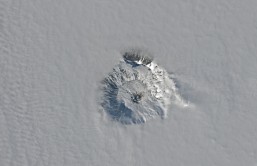For the first time since 1977, a full moon will light up Christmas skies, reaching its peak size around 6:11 a.m. EST before shrinking throughout the day afterward, according to Discovery News.
This year's Yultide full moon, also referred to in the Farmer's Almanac as The Full Cold Moon, the Full Long Nights Moon and the Moon before Yule, comes at a time when the nights are at their longest and darkest. The midwinter full moon has a high trajectory in contrast to a low-hanging sun.
The full moon coinciding with Christmas Day is a rare occurrence - one that hasn't happened since 1977. NASA records indicate that only three full moons have coincided with Christmas Day since 1900, and after this year it will not do so again until 2034.
With that in mind, people have been left with one question that has become increasingly common in recent years: "Will it be a white Christmas?"
The National Oceanic and Atmosphere Administration (NOAA) addressed this concern with a map showing the "Historical Probability of a White Christmas" for the entire U.S. in a blog post on Friday.
"Most of Idaho, Minnesota, Maine, Upstate New York, the Allegheny Mountains of Pennsylvania and West Virginia, and, of course, the Rockies and the Sierra Nevada Mountains all have a high probability of seeing a white Christmas. And, Aspen, Colorado, is just one of about a dozen locations boasting a 100% historical probability of seeing a white Christmas," the post reads.








